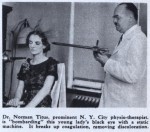Manipulating Invasive Sea Lampreys with Odor
Rachel Nuwer for the The Perch, Audubon Magazine’s blog:
Sea lamprey’s parasitic propensity spelled bad news for the Great Lakes when the nasty critters first invaded the area over 100 years ago. Man-made canals allowed sea lampreys to bypass Niagara Falls, and the creatures spread from Lake Ontario to Lake Erie in 1919. The slippery invaders soon made their way to Lake Michigan, Lake Huron, and Lake Superior in the 1930s and 40s. Since then, sea lampreys have shared credit for decimating key predator species like the lake trout and salmon. In combination with unsustainable fishing practices in the Lakes, the jawless fish have helped derail entire ecosystems and harm species of commercial value.
Scientists, the U.S. Fish and Wildlife Service, and Fisheries and Oceans Canada have battled these nasty critters for years. But now they may have a new combative technique in the arsenal: the reek of death. Sea lampreys, it seems, are repelled by the smell of other decaying sea lampreys. Lacing the water with whiffs of deceased sea lampreys could therefore allow scientists to divert still-living lampreys away from areas of high conservation concern, or even steer them into traps.
Lampreys’ strong reactions to death odors were previously dismissed as a fluke, but research published (subscription required) in the Journal of Canadian Fisheries and Aquatic Sciences now confirms the behavioral trend. Scientists placed wild-caught sea lampreys in a tank, then pumped the water full of the smell of the lamprey’s decaying comrades. “When they’re suddenly exposed to a good shot of this odor, we see a classic fright response,” says Michael Wagner, the lead author of the paper and an assistant professor at Michigan State University’s Fisheries and Wildlife Department. “They try to get away as fast as they can,” he says.
…
Wagner plans to use only a very small concentration of the death smell to divert sea lampreys on their search for mating grounds. “Essentially, we’re trying to give them an easy choice,” he says. To put the smell dosage into perspective, he says, we can think in human terms. For example, if a patron enters a restaurant and is suddenly engulfed in copious amounts of smoke, he’d probably panic and run out of the building, reacting much as the lampreys did to the experiment’s strong death smell signal. But if the same patron notices a smoker is at a nearby table, the much lighter smell of cigarette smoke with simply act as a deterrent for choosing to sit in that area of the restaurant. Wagner hopes to create a similar effect, encouraging the lampreys simply to select one stream instead of another.
This technique, Wagner thinks, will prevent the lampreys from habituating to the smell of death, while still allowing the researchers to manipulate them. “If you go into a wastewater treatment plant, it’s the worst thing you’ve ever smelled for about 15 minutes,” he says, “but eventually you don’t even notice it anymore.” The same thing could happen to lampreys if scientists try to overdose the Lakes with death smells. “Pretty soon they’d just start to ignore it because their reproductive imperative is so strong,” Wagner predicts.
Pumping the smell of corpses into water? Just another day for SCIENCE.

